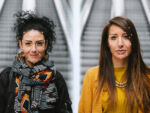A brief history of university education and social mobility
Universities now enjoy a reputation as vehicles for equality and social mobility. But they certainly didn’t start out that way. So how did they arrive there?
Famously, the earliest university in Europe was the University of Bologna, established in 1088. This early model of the university developed over time into a complex structure, guided by statutes which would be roughly recognisable to many of us today. The University of Cambridge timestamps the earliest records of these familiar university structures to the mid-thirteenth century.
These early universities were elitist institutions. In the middle ages, literacy rates in Western European countries were below 20% of the population. This was not a highly educated population, so attending a university was a mark of significant privilege.
This state more or less continued for centuries. More concentrated resources, and a growing middle class in cities, meant that throughout the renaissance and enlightenment, a greater proportion of the population began to access education. Literacy improved—both owing to the expansion of available resources, and to the invention of movable type and subsequent significant headway in the democratisation of access to printed materials. But a university education was still reserved for the very rich until the 20th century.
As the 20th century progressed, several things happened: populations and economies were brutally disrupted. The 1918 flu famously killed more people than World War I, and World War II still has the dubious distinction of the greatest body count ever recorded in war. Concurrent with this uneven contraction in labour resources, rapid technological development meant more and more professions required a high degree of minute specialisation.
In the wake of this unprecedented disruption in the first half of the 20th century, higher education exploded in the wider western world. There was plentiful funding and a tremendous expansion of institutional prestige and access to education. Higher education received more students, more money, and greater status. In keeping with the availability and prestige of university education, professions that had once required an apprenticeship or other vocational training now required a university degree.
The expansion of education had the effect of creating opportunities for upwards social mobility. Through education, people attained access to professional and social that would not have been afforded to them otherwise, moving out of the social class of their parents.
In 2019, Oxfam published their report ‘The power of education to fight inequality’. This report still links well-funded public education with social mobility, calling it “the unparalleled power of public education to tackle growing inequality”.
ResearchMaster is an industry-leading research management system. Find out more.

